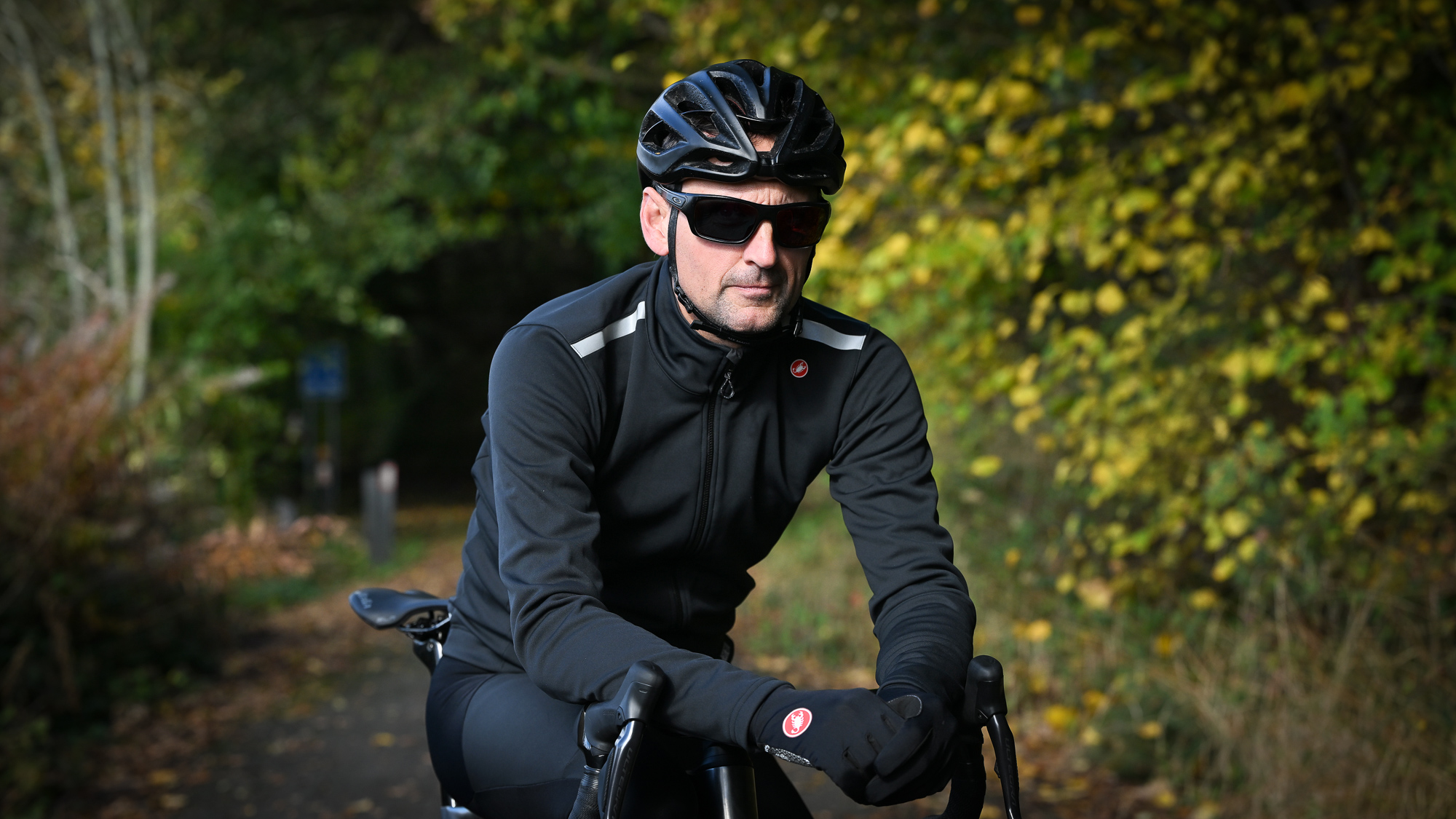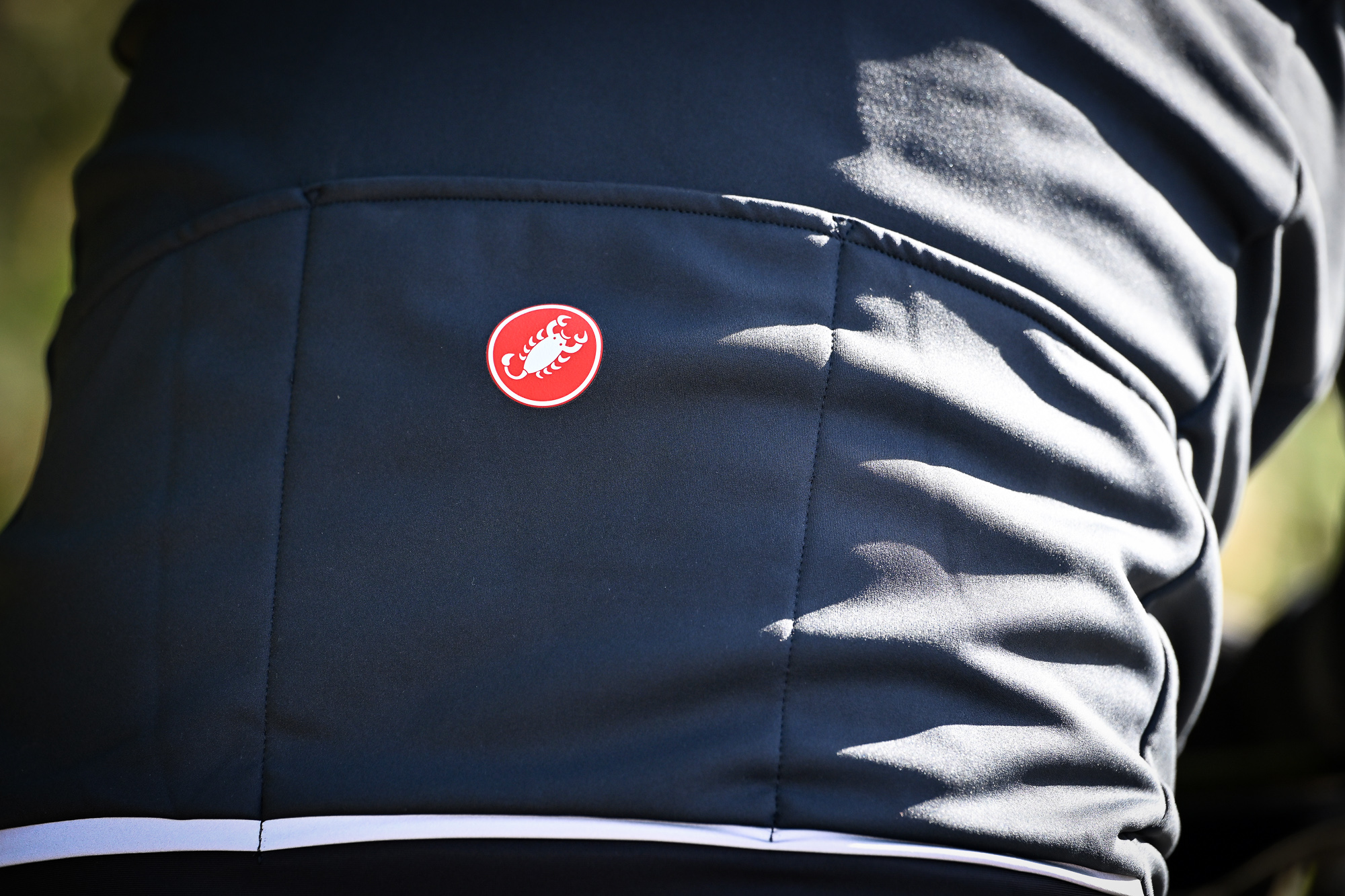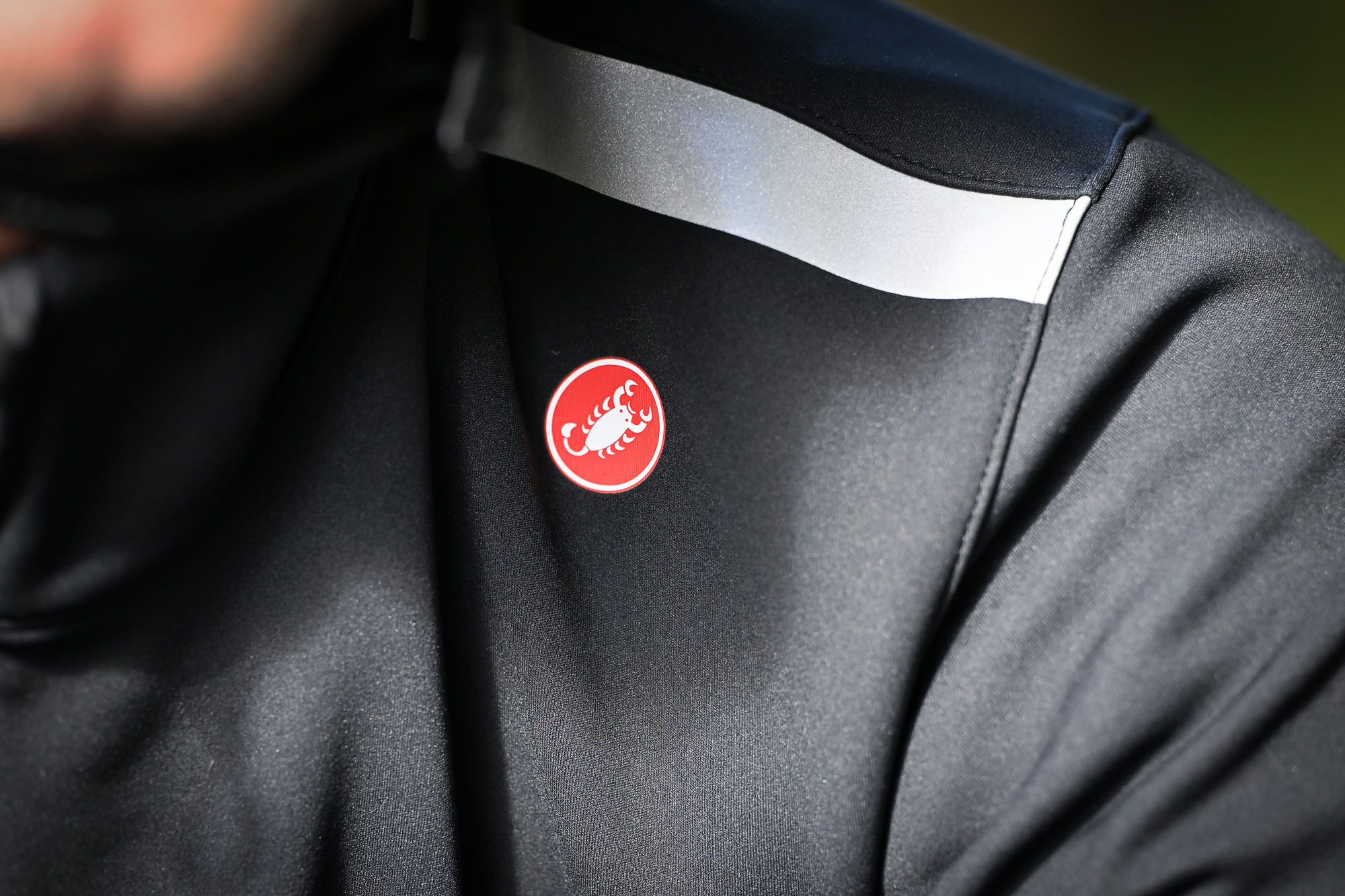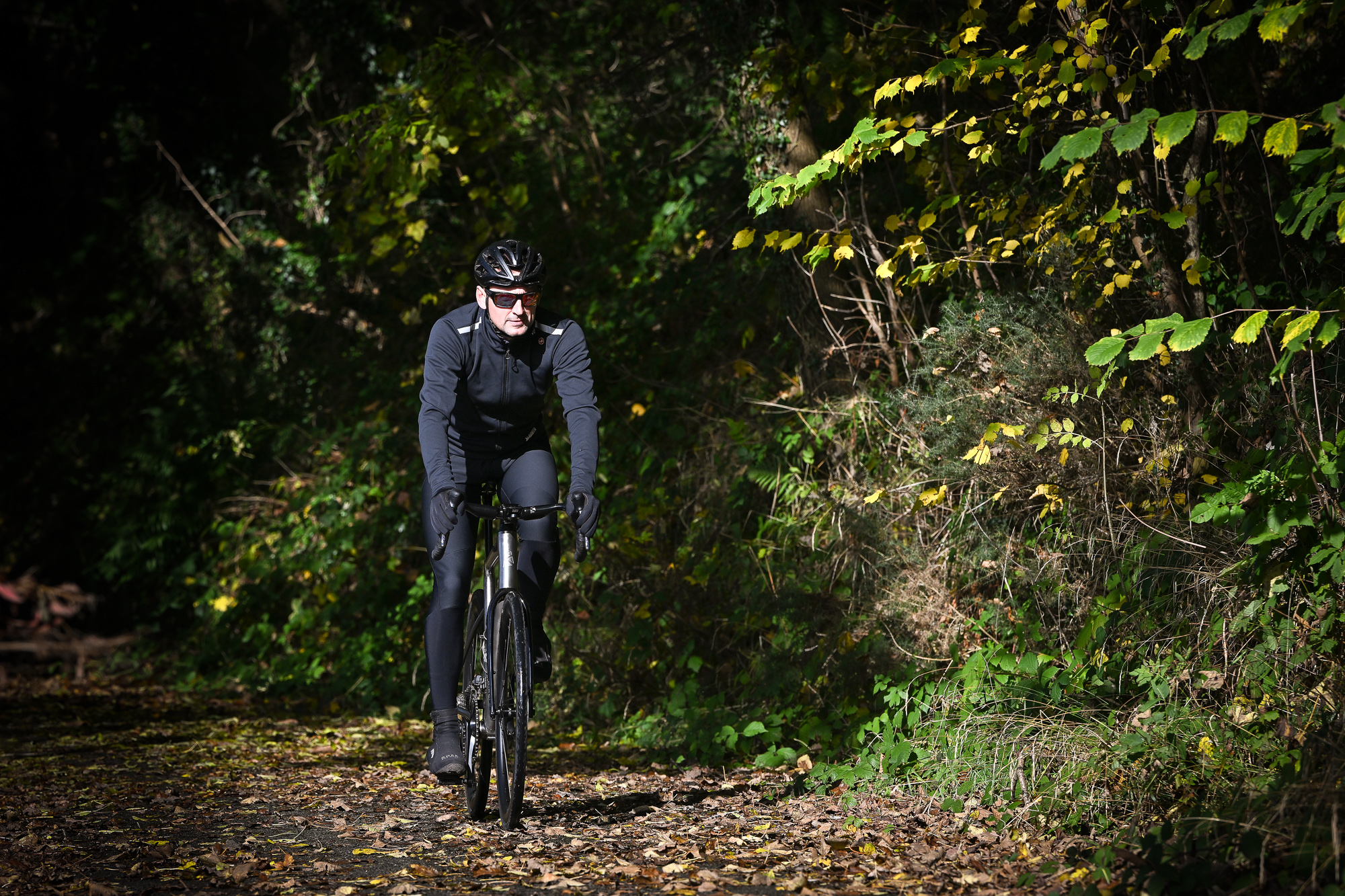
Castelli offers an extremely comprehensive and sometimes slightly confusing number of high-end cycling jackets, all of which offer windproofing, warmth and water resistance in varying ratios. The Espresso Air Jacket is one of the newest entrants into this line-up, and sits between the popular Raddioppia and Transition jackets (amongst others), with warmth and breathability high on its agenda. There is a whole range of 'Espresso' products available, with the stated aim being to be 'the first kit you reach for any time you go to ride and not pinning on a number' according to Castelli's Director of Brand Strategy, Steve Chapin.
The Espresso Air is intended for cold-weather rides, between 0-10°C according to Castelli, and uses their new Ristretto fabric to provide ‘unparalleled breathability, dryness, and warmth’. It could perhaps be described as tending slightly more towards a very warm winter jersey rather than a jacket, but either way, I’d say it is at the base miles and winter training end of the spectrum rather than being intended for bad-weather racing or intense efforts like the Gabba or Perfetto.
For men, the Espresso Air is available in four colours from XS to 3XL, and will feature in the women's range in 2025.
Construction
The Espresso Air is made almost entirely of fleece-lined Ristretto Warm fabric, which is membrane-free and hence very stretchy. It seemed to me to be completely windproof, but Castelli suggests 'the garment works to reduce airflow, not stop it, management'. So it will allow a slight amount of air through to aid breathability and moisture management.
Rich Mardle, UK Brand Manager for Castelli says: "The fabric is all new and built from a multi-layer process, brushed for thermal support. The outer layer is built to restrict airflow and enhance breathability well beyond the abilities of a membrane fabric."
The simple set-in sleeve design is fine, with plenty of extra fabric under the arms to accommodate the riding position while the collar is nice and high to protect against winter chill.

There are three open rear pockets which have a small inner lip, but, as with many of Castelli's jackets, there is no zipped security pocket. I don’t understand this decision as most of their lighter jerseys do offer a secure place to stash keys and cash. Particularly in winter, when pockets are more likely to be stuffed with spare layers and extra snacks, it would be very easy to accidentally pull out more than intended and lose some valuables when fumbling about with gloves on.
The full-length front zip is not two-way, which is fine as you will not likely need to reach up under it for anything while riding. However, it does lack a placket behind the zip (save for a short one in front of the neck), which I find a bit strange. This means that cold air can penetrate the zip and be felt on the chest - my old Raddioppia jacket similarly gets a bit chilly through the zip despite the windproof front. Below the pockets at the back is a slightly extended area without any fleece with a silicone gripper to prevent the jacket from riding up and the outer of the fabric has a PFAS-free DWR treatment to ward off showers and road spray.
There are three reflective patches; a narrow strip underneath the pockets and one on either shoulder. On an all-black jacket, this doesn't seem like enough to guarantee safety on a gloomy winter's day so the Vivid Orange colourway would be my preference instead of the other darker colours on offer.

The Ride
As winter hasn’t fully arrived yet, I haven’t worn it in freezing temperatures but have done plenty of autumn miles at the upper end of its suggested range on cool, 5-10°C type rides. I can’t fault its fit or comfort, with the stretchy Ristretto fabric making it noticeably easier to wear than jackets with a windproof membrane. In all honesty, I haven’t noticed it not being totally windproof yet either, but maybe sub-zero air would highlight this aspect of the jacket and, as mentioned above, I am a little concerned about the lack of protection behind the zip in very cold temperatures.
The amount of stretch means that you could probably size down and wear it as an against-the-skin layer; a kind of extreme long-sleeved jersey, but I chose the size Large to leave room for layering and make the jacket more versatile. Sizing is consistent with other Castelli jackets of this type, and the fit is suitably performance-orientated without being constrictive with plenty of length in the sleeves and body for me (186cm/73kg).

Breathability is a hard thing to assess objectively as conditions vary so much from ride to ride, but I would confidently say that the Ristretto Warm fabric is more breathable than Gore Windstopper. Furthermore, what was very noticeable was that even if the fabric did get a little overwhelmed when slogging up a hill or putting a big effort in, it was quick to purge the moisture when the pace slowed. Having a degree of air permeability meant rapid drying and good breathability throughout the garment but at no time did it feel drafty or cold.
Although the outer fabric has a water-repellency treatment, anything more than a shower requires a waterproof layer over the top. The trim fit of the jacket made it an excellent companion to the Castelli Squall Shell Jacket on the couple of occasions that I misjudged the weather forecast. Equally, paired with something like the Sorpasso RoS Wind Bib Tights, the Espresso Air was perfect for long, cool rides in dryer conditions.
Value and conclusion
The Espresso Air lives or dies by its Ristretto Warm fabric; fortunately, the material is very stretchy, warm and comfortable enabling it to fit very well and its breathability is equally impressive. Staying dry on the inside is key to staying warm in cold weather, and the stop/start nature of cycling with hills and descents makes it very difficult for any jacket to balance warmth and breathability. The Espresso Air makes a good fist of ensuring sufficient airflow to get rid of moisture during efforts whilst still retaining enough insulation when the tempo is slower.
Its cosy protection and form-fitting cut make it an easy choice on days that are too cold for a simple long-sleeved jersey. I guess that theoretically, Windstopper will provide better protection but at a significant cost in terms of breathability, and once you become damp next to your skin getting cold will quickly follow.
There are plenty of warm jacket options around its £225 price point, including about half a dozen from Castelli itself, so this is a very competitive area but I think that the Espresso Air’s high degree of stretch and comfort should put it on any winter jacket shortlist. Just make sure that its particular combination of warmth, breathability and windproofing is right for your usage as there may be other choices better suited to your riding.







